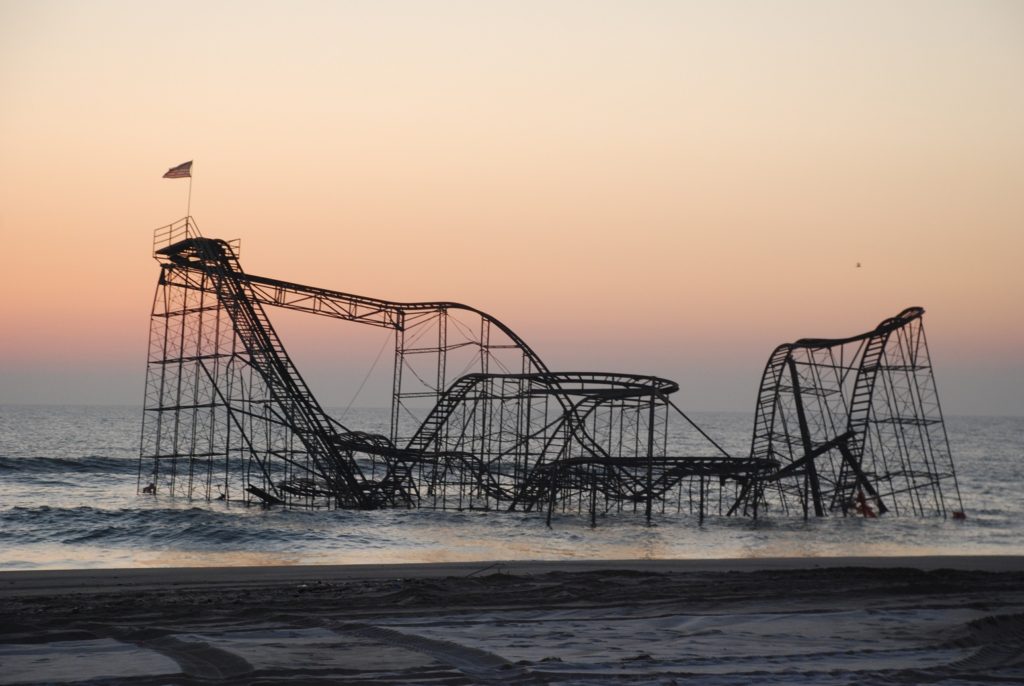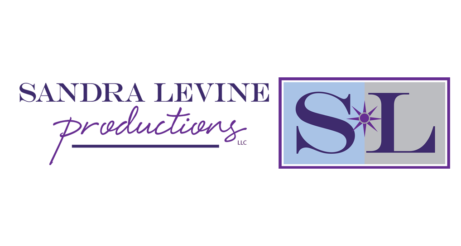(Click here for more information about the one-hour film, Heartbreak & Healing After Sandy.)
On October 29, 2012, Superstorm Sandy barreled up the East Coast and made landfall in New Jersey. Weather forecasters had predicted a devastating storm, and they were right. The Jersey Shore suffered some of the worst damage; a town not far from my home earned the dubious distinction–Ground Zero.
The day before the storm, I headed to Seaside Heights to shoot some “before” shots, in case the boardwalk suffered damage. The JetStar roller coaster was in its usual place, perched on a pier. Within hours, the entire New Jersey coastline, especially in Ocean and Monmouth counties, was forever changed. The ocean met the bay, submerging parts of the barrier island. The roller coaster washed off the pier, landing upright in the ocean, providing one of the storm’s most surreal and iconic images.
Tens of thousands of homes were terribly damaged, including my father’s. Some houses disappeared completely when the storm washed them away. Entire communities burned to the ground in natural gas fires. Power was out for days, weeks, or months, depending on your location, and your luck.
As a filmmaker, I felt compelled to record this historic event unfolding in my backyard. I expected to shoot for about six months, until communities were getting back on track, and then move on to the next project. I naively and severely underestimated the tremendous difficulty of recovery.
In December 2012, two months after the storm, I interviewed a FEMA representative about the rebuilding process. I was shocked by his prediction that full recovery from Sandy would take 10 years. He, too, was right. While many thousands of people rebuilt their homes and businesses, often at much higher elevations, many others lost everything and walked away, lacking the money or the will to jump all the hurdles that came with starting over. Making matters even worse, while people were at their most vulnerable, some unscrupulous contractors ran away with insurance money without doing any work.
From day one, healing from the storm was a direct result of neighbors helping neighbors: first responders, businesses, foundations, faith-based groups, and others coming together to rescue stranded people, clear structures of debris, feed the hungry, console the despondent. Volunteers from all around the country poured into the area to pitch in. Amidst the despair were rallying cries to stay “Jersey Strong” and “Restore the Shore.” Slowly, but surely, came progress.
At the end of two years, a few of the families and businesses I had been following were finally back on their feet, and I turned their stories into the poignant, one-hour film, Heartbreak & Healing After Sandy, that was broadcast on PBS stations in the region. On this eighth anniversary of the storm, the heartbreak is just beginning in other parts of the country where a new hurricane is wreaking havoc, at the same time the whole world remains in the grips of a deadly pandemic. Surely, neighbors helping neighbors will be a very important part of surviving and healing from these current crises, too.

